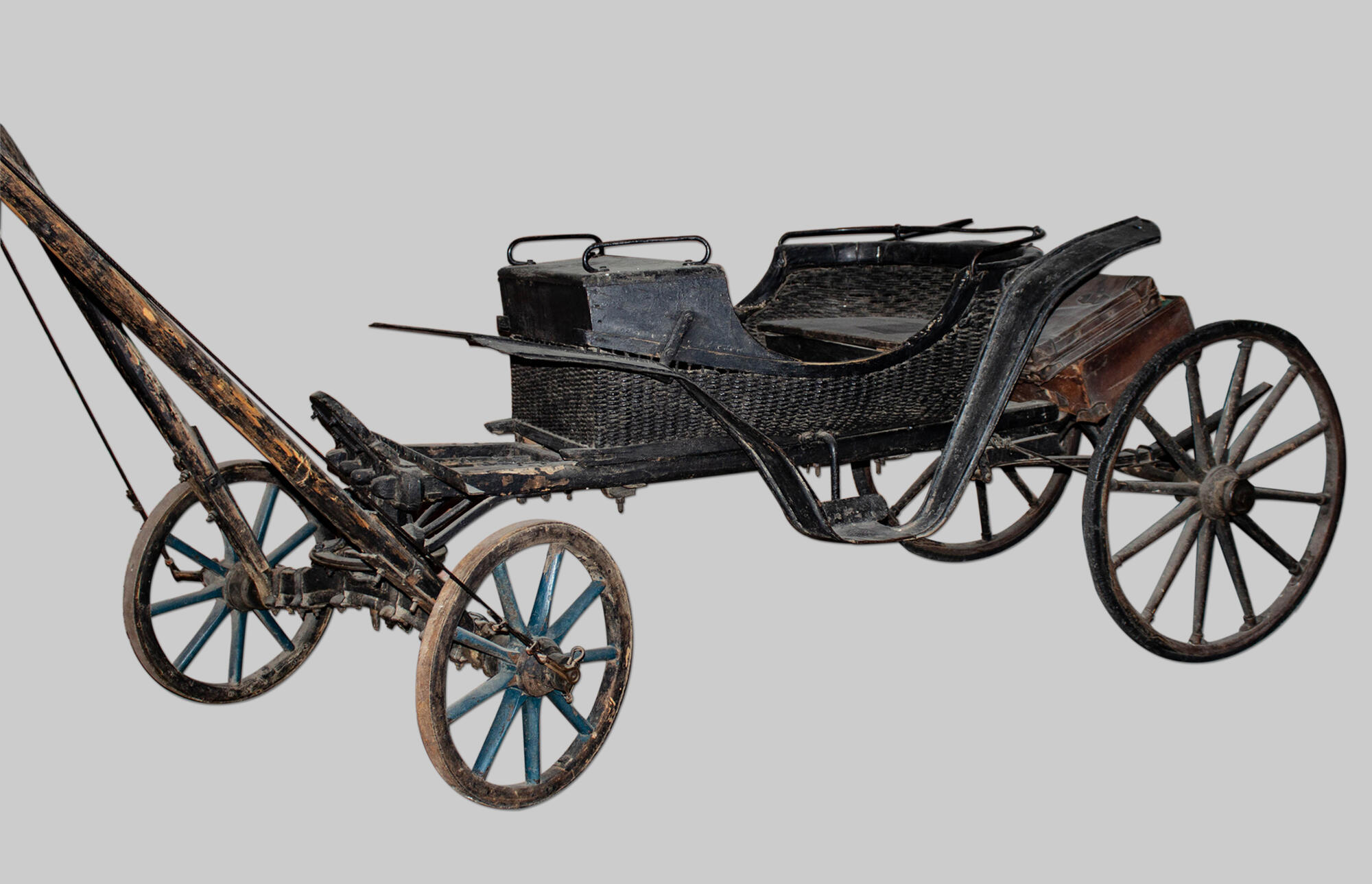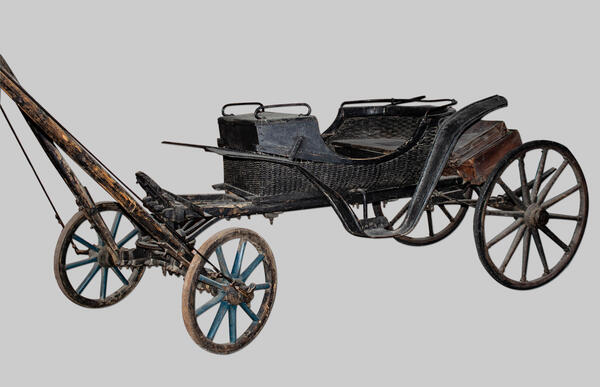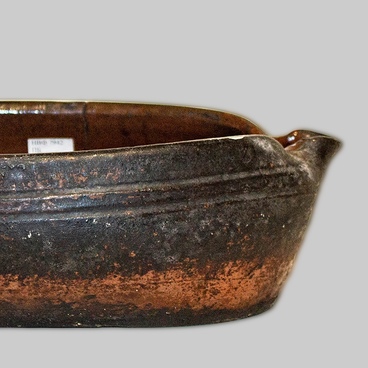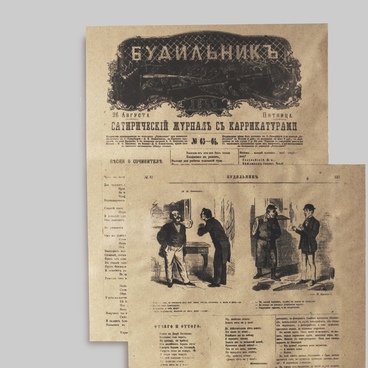The exhibition displays a tarantAss dating to the early 20th century. A tarantass is a four-wheel carriage perched on an extended framework. Originally, a tarantass was fitted with wooden wheels protected by steel tires. Extra absorption was ensured by leather or woven box seat for passengers. It was fixed to the side poles of the frame by leather straps or chains. To an extent, those proved useful on the unsurfaced dirt roads. However, once the road was all the more bumpy or cobbled, the carriage was rumbling over it making even the slightest idea of comfort disappear. The unstable structure of a tarantass turned every journey into a ceaseless bumpy ride. The box seat was filled with hay to soften the impact of the uneven road. Technological advances led to metal tires being replaced by rubber resin. An axle and a box seat were separated with springs, curved yielding bars. The latter served to smooth out the effects of the bumps.
It was a common means of transport in the first half of the 19th century in Russia. Tarantass could commonly take in four passengers with baggage. As a rule, this type of a vehicle had a top. Sometimes, though, it was open, without any leather cover. One of its distinguishing features was its height. Passengers had to be agile to get on and off a tarantass.
More often than not a tarantass brought a moment of awkwardness. Russian and foreign writers spoke quite derisively about the vehicle. In 1840, Vladimir SologUb published a story called A tarantass. One of the characters described this means of transport in the following way ‘What a marvelous thing is this tarantass. It might have taken a lot to invent something of the kind! Simply think of those two long bars, two parallel clubs, huge and infinite; between them there is a large box awkwardly sitting there. This box looks like a giant cup borrowed from ancient feasts. These clubs end with wheels. This odd creature when seen from a distance can be taken for half a dragonfly, and half a carriage. It does remind a being some fantastic world can only produce’.
It was a common means of transport in the first half of the 19th century in Russia. Tarantass could commonly take in four passengers with baggage. As a rule, this type of a vehicle had a top. Sometimes, though, it was open, without any leather cover. One of its distinguishing features was its height. Passengers had to be agile to get on and off a tarantass.
More often than not a tarantass brought a moment of awkwardness. Russian and foreign writers spoke quite derisively about the vehicle. In 1840, Vladimir SologUb published a story called A tarantass. One of the characters described this means of transport in the following way ‘What a marvelous thing is this tarantass. It might have taken a lot to invent something of the kind! Simply think of those two long bars, two parallel clubs, huge and infinite; between them there is a large box awkwardly sitting there. This box looks like a giant cup borrowed from ancient feasts. These clubs end with wheels. This odd creature when seen from a distance can be taken for half a dragonfly, and half a carriage. It does remind a being some fantastic world can only produce’.



